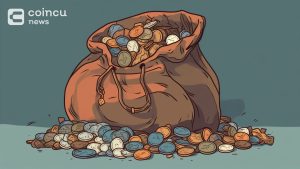BoA strategist believes that Solana can be the “visa of the cryptocurrency”
Bank of America (BoA) digital assets strategist Alkesh Shah predicted in a January 11 release that Ethereum competitor Solana could become the “visa of the digital asset ecosystem.”
Solana (SOL) was launched in 2020 and has grown exponentially, becoming the fifth largest cryptocurrency with a market cap of $ 47.4 billion. The Solana network can be said to be growing at a faster rate than Ethereum as it has been used to process more than 50 billion transactions and minted more than 5.7 million NFTs.
Source: TradingView
However, critics argue that the speed of the network comes at the expense of a lack of decentralization and transparency, but Shah argues that the benefits of the project far outweigh the disadvantages:
“Its ability to deliver high throughput, low cost, and ease of use creates a blockchain that is optimized for consumer use cases such as micropayments, DeFi, NFT, decentralized networks, etc. (Web 3) and gaming.”
Shah went on to say that Solana is penetrating some of Ethereum’s market share because of its low fees, ease of use and scalability, while Ethereum could be classified as “identifiable, high-quality transaction use cases”, storage and supply chain. wrote Shah, adding:
“Ethereum prioritizes decentralization and security, but at the expense of scalability, this has resulted in times of network congestion and transaction fees that are sometimes higher than the value of the transaction being sent.”
Visa processes an average of 1,700 transactions per second (TPS), but the network can theoretically process at least 24,000 TPS. Ethereum currently processes around 12 TPS on the mainnet (more on Layer-2), while Solana offers up to 65,000 TPS (in theory).
Shah admitted, “Solana prioritizes scalability, but a blockchain is relatively less decentralized and insecure. This is reflected in a number of network performance issues since its inception. “
Solana has had numerous network performance issues over the past few months, such as the withdrawal issue last confirmed by Binance on Jan. 12, delayed social media performance reporting on Jan. 7, and a DDoS attack on Jan. 5, despite Solana denying the case.
Almost a month ago, on December 10th, Solana also recorded another DDoS attack with an IDO on the decentralized exchange Raydium.
Austin Federa, director of communications at Solana Labs, says the developers are currently trying to resolve the network’s problems, particularly those related to improving transaction measurement.
“The Solana term is a novel design. It doesn’t use EVM (Ethereum Virtual Machine) and many improvements have been made to ensure that user fees are as cheap as possible, but there is still a lot to be done about the runtime. “
Join our telegram to keep track of news and comment on this article: https://t.me/coincunews
Follow the Youtube Channel | Subscribe to telegram channel | Follow the Facebook page




















